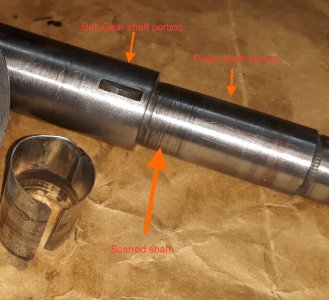- Joined
- Dec 25, 2011
- Messages
- 10,552
Not trying to belabor nomenclature, but the usual names are tailstock ram (a spindle either turns or sometimes has something that turns on it). The tailstock ram hopefully never turns! And clamp nuts are called either half nuts or split nuts.



